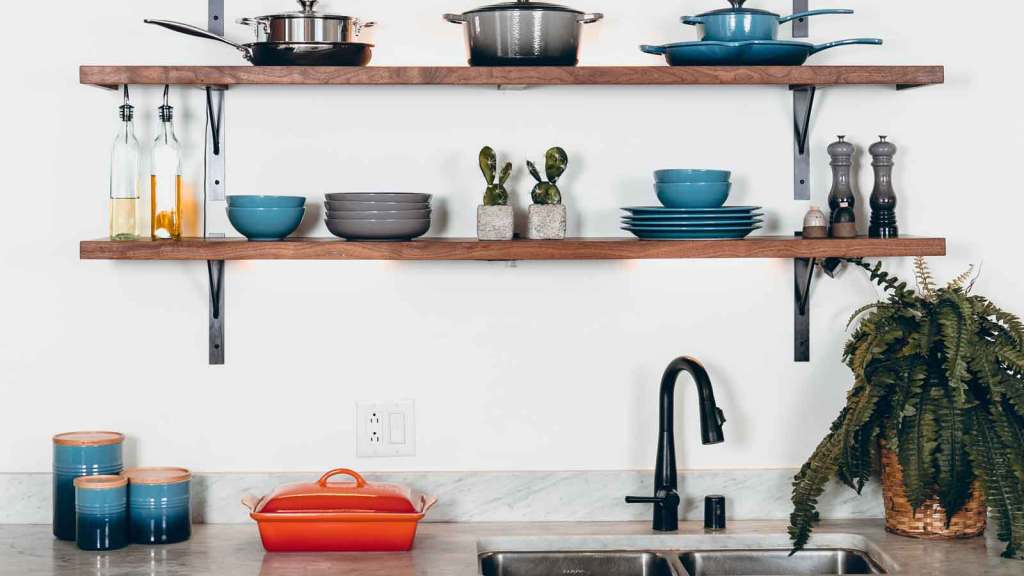Everyone knows the satisfaction of a clean, well-organised kitchen. Often overlooked, however, is how much waste happens in this part of the home. More than just food waste, paper towels, unnecessary packaging, water waste and harsh chemicals are all seemingly small factors that can add up to make you kitchen the least sustainable zone of your home.
With increasing awareness about environmental issues, it’s time to wise up (if you haven’t already) and make conscious efforts to turn the kitchen into a more sustainable space. Knowing where to start can seem like a daunting task, though. And oftentimes, eco-friendly alternatives seem expensive and/or impractical.
Because we know that sifting through the noise to get some actual advice can be daunting, we’ve rounded up a few of the best tips for making your kitchen more sustainable. In addition to being practical, these changes are easy to make without spending a fortune.
Sustainable Tips for a More Eco-Friendly Kitchen
- Ditch the cling wrap: We all know that one-use plastics are terrible for the environment, and plastic wrap falls into this category. While it might seem like a good alternative, aluminium foil is actually even worse for our planet.
- Use beeswax wraps instead: If you feel like ditching the cling wrap is impossible, try replacing it with beeswax wraps which are washable, reusable and made from environmentally-friendly materials. Lily Bee Wrap is a great place to get them, and they even have videos detailing the many ways they can be used.
- Recycle and compost what you can: Making sure to keep recycling and compost bins in the kitchen will mean less waste going into landfills. While recycling bins are pretty straightforward, composting might seem a bit more intimidating. Never fear, there are plenty of stylish countertop compost bins for you to throw food scraps into. Some even come with a built-in filter meaning that you never have to worry about the smell.
- Eco-friendly clean-up: One area that often goes overlooked is cleaning. If you’re used to using paper towels or disposable rags to do your dirty work, it might be time to reconsider. Try switching to fabric cloths or sustainably-made sponges (many are made of plastic). Take note of the cleaning products you’re using as well, choosing environmentally-friendly alternatives to harsh chemicals which linger and lead to water and soil pollution.
- Run your dishwasher smartly: In addition to running your dishwasher only when you have a full load ready, make sure you’re choosing the most water and power efficient setting. If your washer has an “Eco” setting, that’s what you should go for. While the speed setting might seem better, it often uses more power and water to get the job done quickly. Instead, opt for an automatic setting which uses sensors to gauge how long the cycle should run. Skip the rinse and heat dry cycles, as well. Both of those use unnecessary water and energy, and what doesn’t air dry can easily be wiped down with a clean cloth.
- Buy dry goods at bulk-shopping stores: Rather than relying on food products that use unnecessary packing, bring your own containers (like recycled glass jars) to bulk foods stores to cut down on waste. Shops like Naked Foods and The Source Bulk Foods not only reduce waste, but they also promote sustainable practices and can save you a lot of money in the long run.
- Add an aerator to your kitchen sink: Adding a low-flow aerator to your kitchen sink reduces the amount of water used, without compromising on water pressure. They can easily be bought online and are usually easy to install. Using an aerator can help you use about half as much water and energy with no noticeable difference.
- Change the lighting: If your kitchen isn’t already fitted out with LED light bulbs, it’s time to make the switch. In addition to being far more energy-efficient, LED bulbs also last a lot longer, which will also make your life easier.







